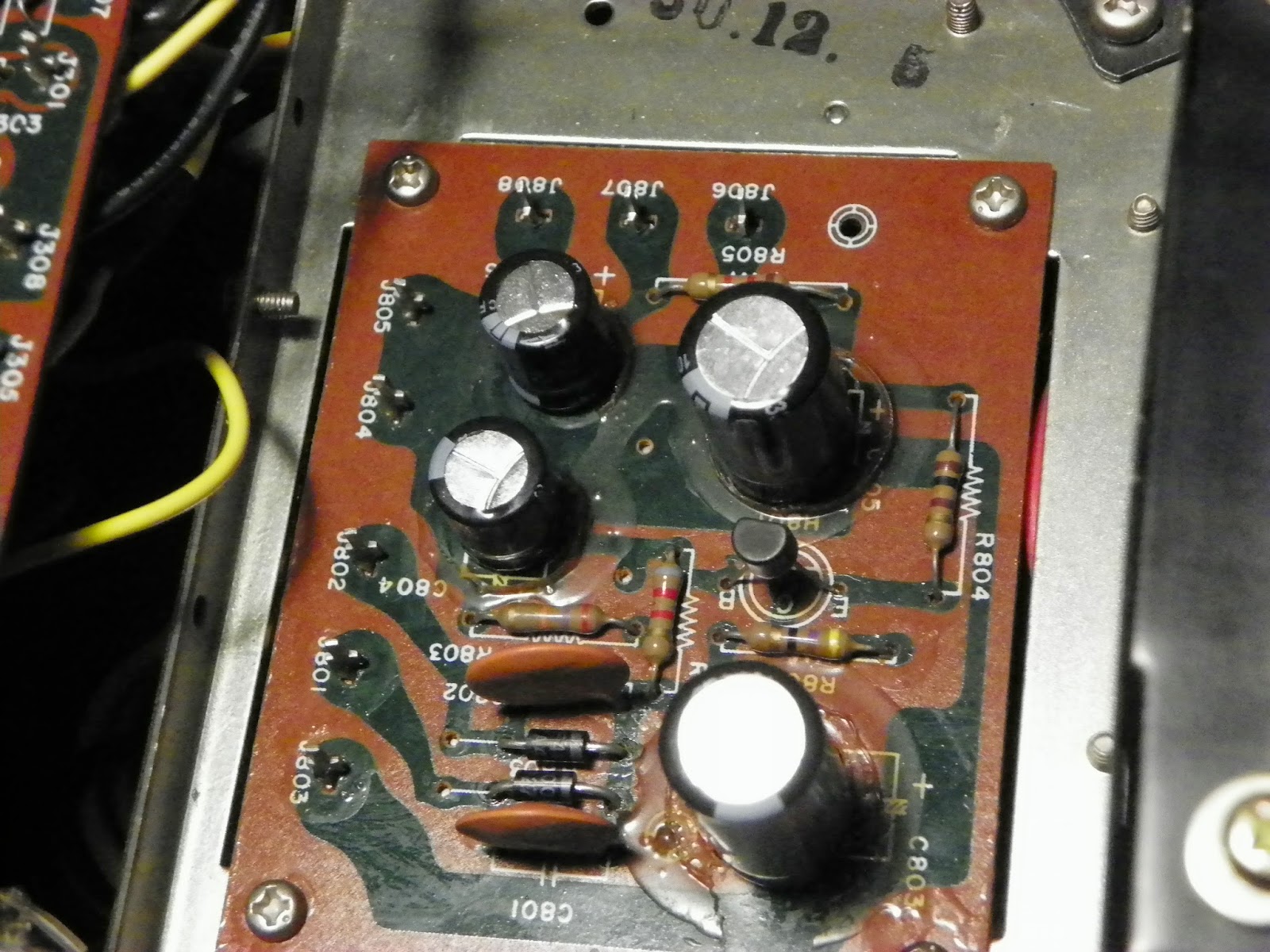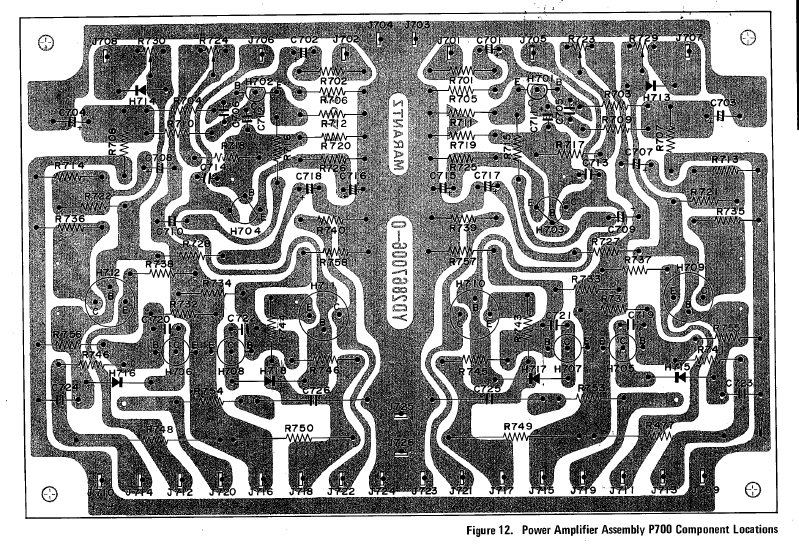It would seemed that I've been getting a lot of 50 class 22XX receivers lately. The difference between the 2250B/52 and B variants is all substantial in PCB design and layout.
Power Supply
This is an interesting design. The power supply and power amplifier board and relay are all located on a single PCB section. Typically I do not like this. IIt creates a significant chance of noise and extra heat dissipation issues.
On the power supply I used Panasonic FC and FRs, a long life high temp capacitor. Two diodes, a common cathode and common anode should be replace here with a more reliable modern MUR1620CTG/CTRG diodes in the same package (TO-220)
The relay is another 4 contact Omron MY-4-02 type. What makes this one easier than say the 2330 MY4 is at almost an exact drop in replacement pin wise.
Power Amplifier
All the caps were replaced with Elna Silmic II's and Nichicon FG capacitors. One thing to mind is C701, the polarity is backwards on the decoupling cap in this stage.
Access is hard here. Your best bet is to remove the filter capacitors mounted under the chassis (same with the 1070 integrated) and remove the speaker switch arms. I think this was a design issue of fabrication VS repair. The large filter caps were replaced with two 6800uf 80V Nichicon KG type, again these are mounted under the amp boards. New mica insulators and thermal compound was applied as well.
Tone/Pre
This is a fairly easy access board by pulling the pots away from the chassis and pulling out. I used Nichicon MUSE BP capacitors at CE23/24 as theirs no significant DC here, ECW PP's would be nice here too. The two small brown films which I don't like (big browns are stay) were replaced with two .22uf ECW PP Panasonic films. The rest were replaced with WIMA MKS2 and Elna Silmic II capacitors.
Phono/Control.
This is another interesting layout. The phono is combined with the tone control and meter switching. The switching function is pulled through a elongated shaft from the faceplate. The meter capacitor and switching is here also. WIMA MKS2 (small stage) and Elna Silmic II and Nichicon FG capacitors were used here.
Added a new EG1018-ND power switch and safety capacitor,note the extension shaft. And thats a wrap.
One thing to note on the 2252B is a signal meter issue. After talking with several folks it would appear this is consistent as well where the signal meter dances in all functions. I think this is due to the capacitor way back the line VS across the actual meter, at some point I would advise to place a jumper at C422 and pull the cap across the meter, this may cure that.
Overall its a very nice sounding unit once recapped, very robust and very attractive faceplate, getting away from the black and black bevel and going to the silver dial plate.

























































